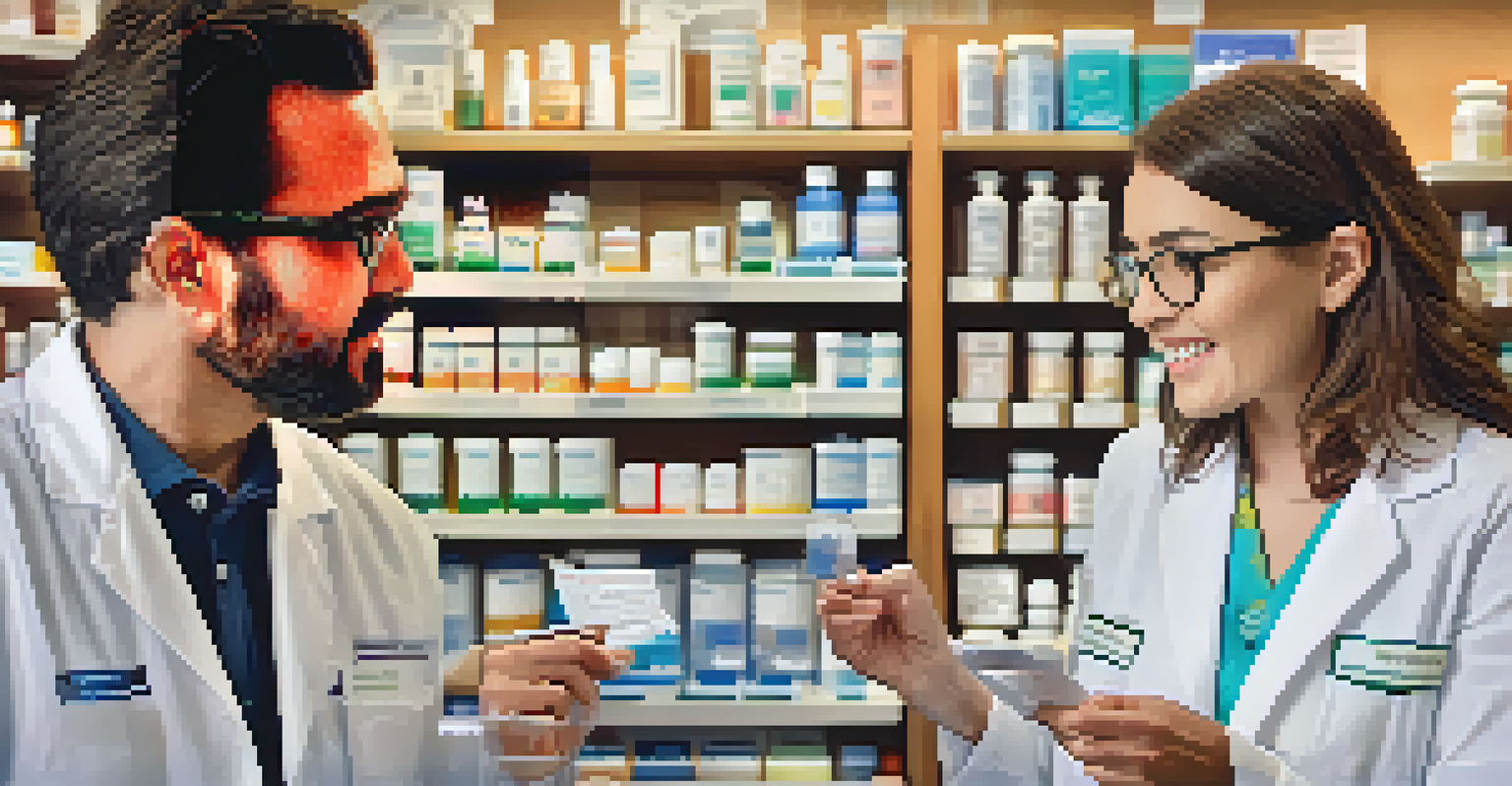Effective Communication Strategies for Clinical Pharmacists

Understanding the Role of Communication in Pharmacy
Communication is at the heart of clinical pharmacy, serving as the bridge between pharmacists, patients, and healthcare teams. It's not just about dispensing medication; it's about ensuring that patients understand their treatments and feel supported. Effective communication can significantly enhance patient outcomes and satisfaction, making it a vital skill for pharmacists.
The art of communication is the language of leadership.
Pharmacists often collaborate with doctors and nurses, which means clear communication can prevent medication errors and misunderstandings. When everyone is on the same page, patients receive safer, more effective care. This teamwork requires not only clarity but also active listening skills to truly understand the needs of each team member and patient.
Moreover, effective communication fosters trust between pharmacists and patients. When patients feel heard and understood, they are more likely to adhere to their medication regimens. This trust can lead to better health outcomes, demonstrating the powerful impact of strong communication skills.
Active Listening: A Key Element in Patient Interactions
Active listening is more than just hearing words; it’s about understanding the underlying message. For clinical pharmacists, this means being fully present during patient consultations and validating their concerns. By practicing active listening, pharmacists can gather essential information, which is crucial for making informed recommendations.

When pharmacists listen actively, they can uncover issues that may not be immediately obvious, such as medication side effects or financial concerns. This understanding allows pharmacists to tailor their advice and create a more personalized care plan for each patient. It's like being a detective, piecing together clues to ensure optimal patient care.
Effective Communication Enhances Care
Clear communication between pharmacists, patients, and healthcare teams is vital for improving patient outcomes and satisfaction.
Additionally, active listening can help build rapport with patients, making them more comfortable discussing their health issues. This comfort can lead to more open and honest conversations, which are essential for effective medication management and adherence.
Using Clear Language to Enhance Patient Understanding
In the world of clinical pharmacy, jargon can be a barrier to effective communication. Instead of using complex medical terms, pharmacists should strive to use clear, simple language that patients can easily understand. This approach not only improves comprehension but also empowers patients to take an active role in their healthcare.
Listening is an important skill for everyone, especially in healthcare, where understanding a patient's concerns can make all the difference.
For instance, instead of saying 'antihypertensive medication,' a pharmacist might say 'medicine to lower your blood pressure.' This small change can make a significant difference in how patients perceive their treatment and the importance of adhering to it. Clarity in communication fosters confidence and encourages questions, leading to a more engaged patient.
Moreover, using visual aids or written materials can further enhance understanding. Handouts that explain medication instructions or potential side effects can serve as valuable references for patients, allowing them to feel more informed and in control of their health.
Non-Verbal Communication: The Power of Body Language
Non-verbal communication often speaks louder than words. For clinical pharmacists, body language, eye contact, and facial expressions can convey empathy and understanding. When pharmacists exhibit positive non-verbal cues, patients are more likely to feel comfortable and valued during their interactions.
For example, leaning slightly forward during a conversation can signal attentiveness and interest, while maintaining eye contact demonstrates engagement. These non-verbal signals can help reinforce the verbal messages being shared, creating a more holistic communication experience.
Active Listening Builds Trust
Practicing active listening helps pharmacists understand patient concerns, leading to tailored care and stronger relationships.
Additionally, being aware of patients’ non-verbal cues can provide insights into their feelings and concerns. A patient who appears anxious or withdrawn may need extra reassurance or support, allowing pharmacists to adapt their approach to better meet individual needs.
Empathy in Communication: Building Strong Patient Relationships
Empathy is a cornerstone of effective communication in clinical pharmacy. By putting themselves in their patients' shoes, pharmacists can better understand their struggles and fears, which can significantly impact medication adherence. This emotional connection fosters trust and encourages patients to share their concerns more openly.
For instance, if a patient expresses fear about side effects, a pharmacist can acknowledge that fear and provide reassurance by discussing the benefits of the medication. This approach not only addresses the patient’s worries but also reinforces the pharmacist’s role as a supportive healthcare provider.
Moreover, demonstrating empathy can lead to improved patient satisfaction and loyalty. When patients feel cared for and understood, they are more likely to return for future consultations and follow through with their treatment plans.
Utilizing Technology to Enhance Communication
In today's digital age, technology can play a significant role in enhancing communication between clinical pharmacists and patients. Tools such as telepharmacy, messaging apps, and patient portals allow for more accessible and convenient communication. These platforms can bridge gaps, especially for patients who may have difficulty visiting a pharmacy in person.
For example, telepharmacy can enable pharmacists to conduct consultations via video calls, ensuring that patients receive timely medication advice without the need to travel. This can be especially beneficial for patients in rural areas or those with mobility issues, enhancing their overall healthcare experience.
Technology Streamlines Patient Interaction
Utilizing technology such as telepharmacy and messaging apps enhances communication, making healthcare more accessible for patients.
Additionally, automated reminders for medication refills or consultations can improve adherence and ensure that patients stay on track with their treatment plans. By leveraging technology, pharmacists can create a seamless communication flow that enhances patient engagement and satisfaction.
Feedback: An Essential Tool for Continuous Improvement
Feedback is a critical component of effective communication strategies for clinical pharmacists. Actively seeking feedback from patients can provide valuable insights into their experiences and satisfaction with care. This information is essential for identifying areas of improvement and adapting communication approaches accordingly.
For instance, after a consultation, a pharmacist might ask patients about their understanding of the medication instructions or if they felt their questions were adequately addressed. This not only demonstrates a commitment to patient-centered care but also encourages continuous improvement in communication practices.

Moreover, fostering a culture of open feedback within healthcare teams can enhance collaboration and coordination of care. When pharmacists engage with colleagues to share insights and challenges, it leads to more effective communication strategies that ultimately benefit patient care.